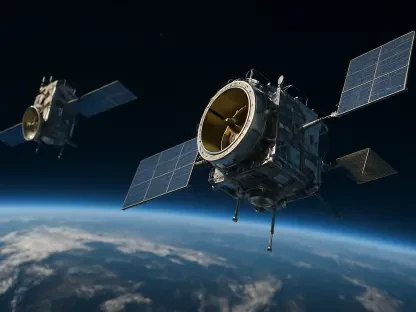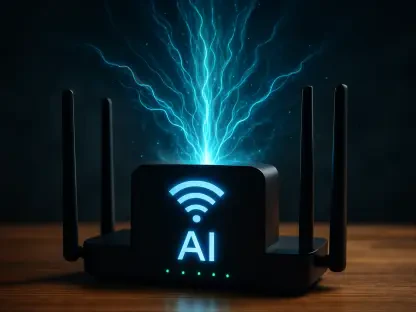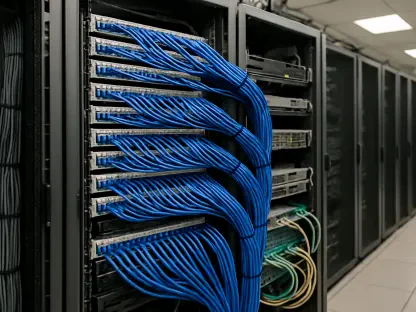In an era where digital transformation shapes every facet of industry and society, the Internet of Things (IoT) stands as a cornerstone of innovation, connecting devices and enabling data-driven decisions across the globe. Amid this technological revolution, Telefónica has emerged as a dominant force, recognized as a global leader in IoT connectivity by industry experts. According to the latest benchmarking reports, the company excels among top-tier communications service providers, showcasing unparalleled expertise and solutions that redefine how businesses and communities leverage connected technologies. With millions of active connections worldwide and a robust presence in key markets, Telefónica’s strategic vision and cutting-edge platforms are setting new standards. This remarkable achievement stems from a blend of advanced infrastructure, tailored industry applications, and a commitment to harnessing data for actionable insights, positioning the company at the forefront of a rapidly evolving digital landscape.
Pioneering Technology with the Kite Platform
Telefónica’s ascent to the pinnacle of IoT connectivity is largely fueled by its innovative Kite managed connectivity platform, a tool that redefines how businesses interact with connected devices. This platform offers a suite of advanced features, including SIM card management, open APIs for seamless integration, and data visualization dashboards powered by artificial intelligence (AI). These AI-driven capabilities enable anomaly detection in IoT devices, ensuring operational efficiency and preempting potential issues before they escalate. Beyond mere connectivity, Kite transforms raw data into meaningful insights, allowing organizations to monitor and optimize their operations in real time. The platform’s ability to integrate with hyperscale cloud environments through specialized functions further enhances its utility, making it a versatile solution for enterprises seeking to scale their IoT deployments. Such technological prowess underscores Telefónica’s role as an enabler of digital transformation, providing the tools necessary to navigate the complexities of a connected world.
Another dimension of the Kite platform’s impact lies in its support for asset management, addressing critical needs in industries reliant on physical infrastructure. Features like “Asset Control” allow for precise tracking and monitoring of fixed assets, such as tank levels or machinery locations, which is invaluable for sectors like logistics and manufacturing. This functionality not only boosts operational transparency but also reduces downtime by facilitating predictive maintenance. Additionally, the platform’s integration of big data solutions, combining telecommunications data with external inputs like weather or traffic patterns, offers a holistic view for decision-making. Businesses can leverage these insights to refine processes, cut costs, and enhance service delivery, demonstrating how Telefónica’s technology transcends basic connectivity to deliver tangible value. This comprehensive approach ensures that clients across diverse domains can harness IoT potential without being constrained by technical limitations or data silos.
Dominating Market Growth and Global Reach
Telefónica’s leadership in IoT connectivity is vividly illustrated by its staggering market performance, with over 51 million active IoT connections worldwide as of this year. This impressive figure highlights the company’s scalability and ability to meet the growing demand for connected solutions on a global scale. In Spain alone, Telefónica holds a commanding position with more than 12 million lines, reflecting a remarkable year-on-year growth rate of 163%. Such numbers are not merely statistics but a testament to the trust businesses and public entities place in Telefónica’s infrastructure and expertise. This dominance in key markets positions the company as a benchmark for reliability and reach, ensuring that clients can deploy IoT solutions with confidence, regardless of geographic constraints. The ability to sustain such rapid expansion while maintaining service quality further cements Telefónica’s reputation as a frontrunner in the industry.
Beyond sheer numbers, the strategic focus on expanding IoT applications across varied regions underscores Telefónica’s adaptability to diverse market needs. The company’s global footprint allows it to tailor solutions that resonate with local challenges, whether in densely populated urban centers or remote industrial zones. This flexibility is crucial in an era where IoT use cases range from smart city initiatives to rural infrastructure monitoring. By investing in robust network capabilities and partnerships, Telefónica ensures seamless connectivity even in challenging environments, enabling clients to unlock new opportunities. Furthermore, this expansive reach facilitates cross-border collaboration, allowing multinational corporations to standardize their IoT deployments under a single, trusted provider. This global-local balance not only drives Telefónica’s growth but also amplifies its impact on digital ecosystems worldwide, reinforcing its role as a catalyst for innovation.
Transforming Industries with Vertical Solutions
One of the standout aspects of Telefónica’s IoT strategy is its extensive portfolio of vertical offerings, designed to address the unique demands of specific sectors. From smart cities to healthcare and industrial applications, the company delivers customized solutions that tackle real-world challenges with precision. In mobility, for instance, connected V-16 beacons enhance road safety by providing real-time alerts, while in healthcare, IoT devices monitor vulnerable individuals, ensuring timely interventions. Similarly, smart meters for water and gas optimize infrastructure management, reflecting Telefónica’s commitment to sustainability and efficiency. These targeted applications demonstrate a deep understanding of industry pain points, positioning the company as a partner rather than just a provider, capable of driving meaningful outcomes through technology.
Equally significant is Telefónica’s contribution to Industry 4.0, where IoT solutions are revolutionizing manufacturing and operational workflows. By enabling real-time data collection and analysis, the company helps industrial clients transition to smarter, more agile production systems. This is particularly evident in predictive maintenance applications, where connected sensors anticipate equipment failures, minimizing disruptions and extending asset lifespans. Additionally, the integration of AI with IoT data offers deeper insights into operational trends, empowering businesses to make informed strategic decisions. Telefónica’s ability to cater to such a wide array of sectors, from public services to private enterprises, mitigates reliance on any single market, ensuring resilience amid economic fluctuations. This diversified approach not only broadens the company’s impact but also sets a precedent for how IoT can transform traditional industries into digital powerhouses.
Shaping the Future of Digital Transformation
Reflecting on Telefónica’s journey, it becomes evident that the company has carved a unique path by blending technological innovation with strategic market insight. The groundbreaking Kite platform has consistently delivered value, turning complex data into actionable intelligence for businesses worldwide. Growth in IoT connections, especially the dominance in Spain with millions of active lines, has showcased Telefónica’s capacity to scale and adapt over time. Moreover, the tailored solutions for diverse industries have addressed pressing societal and operational needs, from enhancing safety to optimizing resources.
Looking ahead, the focus should shift toward sustaining this momentum by investing in emerging technologies and expanding into untapped markets. Collaborating with stakeholders to develop next-generation IoT applications could further solidify Telefónica’s influence. Businesses and policymakers alike might consider leveraging such expertise to accelerate digital initiatives, ensuring that connectivity continues to drive progress across domains. Exploring integrations with evolving fields like edge computing could also unlock new possibilities, keeping Telefónica at the vanguard of the IoT revolution.









